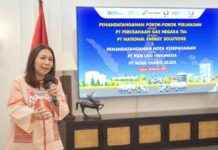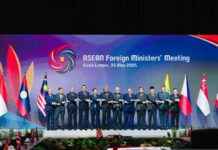Godzilla, the iconic giant monster from Japan, has a history deeply intertwined with nuclear tragedy. Originating from the aftermath of the bombings of Hiroshima and Nagasaki, a specific incident in the early 1954 also played a pivotal role in inspiring the creation of Godzilla.
**Indonesia’s Unexpected Role**
In early 1954, the United States conducted a nuclear bomb test at Bikini Atoll near the Marshall Islands. The resulting radioactive contamination spread across the Pacific Ocean, reaching a Japanese tuna fishing boat called the Lucky Dragon No. 5. Crew members suffered from acute radiation syndrome, with one tragically losing their life due to radiation exposure.
This incident sparked massive anti-nuclear protests in Japan, leading to boycotts of contaminated tuna and petitions calling for a ban on nuclear weapons. The collective trauma experienced by the Japanese people from the use of nuclear weapons and its long-term impacts was palpable.
**The Film Production Plan**
In the same year, Toho film studio planned to produce a movie titled “Eiko no Kage ni” (In the Shadow of Glory) as a joint production between Japan and Indonesia. The film aimed to depict the impact of Japan’s occupation in Indonesia and tell the story of Japanese soldiers fighting alongside Indonesian people for independence.
On February 16, 1954, producer Tomoyuki Tanaka and director Senkichi Taniguchi traveled to Jakarta to finalize a contract with Perfini, the National Film Company of Indonesia. Despite initial smooth progress, Indonesia requested a delay in filming until April due to adverse weather conditions.
However, on March 20, 1954, Toho received a letter from Indonesia rejecting the script and canceling the film project “Eiko no Kage ni.” Strong anti-Japanese sentiments in Indonesia at that time, coupled with fragile post-war relations between Japan and Indonesia, led to political pressure forcing the Indonesian government to deny visas to the Japanese filmmakers.
**The Birth of Godzilla**
As a result of the project’s cancellation, Tanaka and the Toho team had to return to Tokyo. Facing a production deadline, Tanaka decided to shift focus from a war film to a monster movie. The inspiration for Godzilla emerged, partly triggered by the Daigo Fukuryu Maru tragedy and the success of American sci-fi films like “The Beast from 20,000 Fathoms” and “King Kong.”
This unexpected turn of events not only changed the course of filmmaking history but also gave rise to a cultural icon that would resonate globally for decades to come. Godzilla’s origins lie in real-world tragedies and geopolitical tensions, making it a powerful symbol of the dangers of nuclear technology and the collective fears of society.
**The Legacy of Godzilla**
The first Godzilla film was released in 1954 and achieved tremendous success. With stunning visual effects and a profound storyline, Godzilla quickly became a global pop culture icon representing the destructive impact of nuclear weapons.
In conclusion, Godzilla’s creation was not just a product of cinematic ingenuity but a reflection of the stark realities of a post-war world grappling with the consequences of nuclear warfare. The monster’s symbolism as a cautionary tale against nuclear dangers remains relevant today, given the ongoing global threats posed by nuclear technology.






















